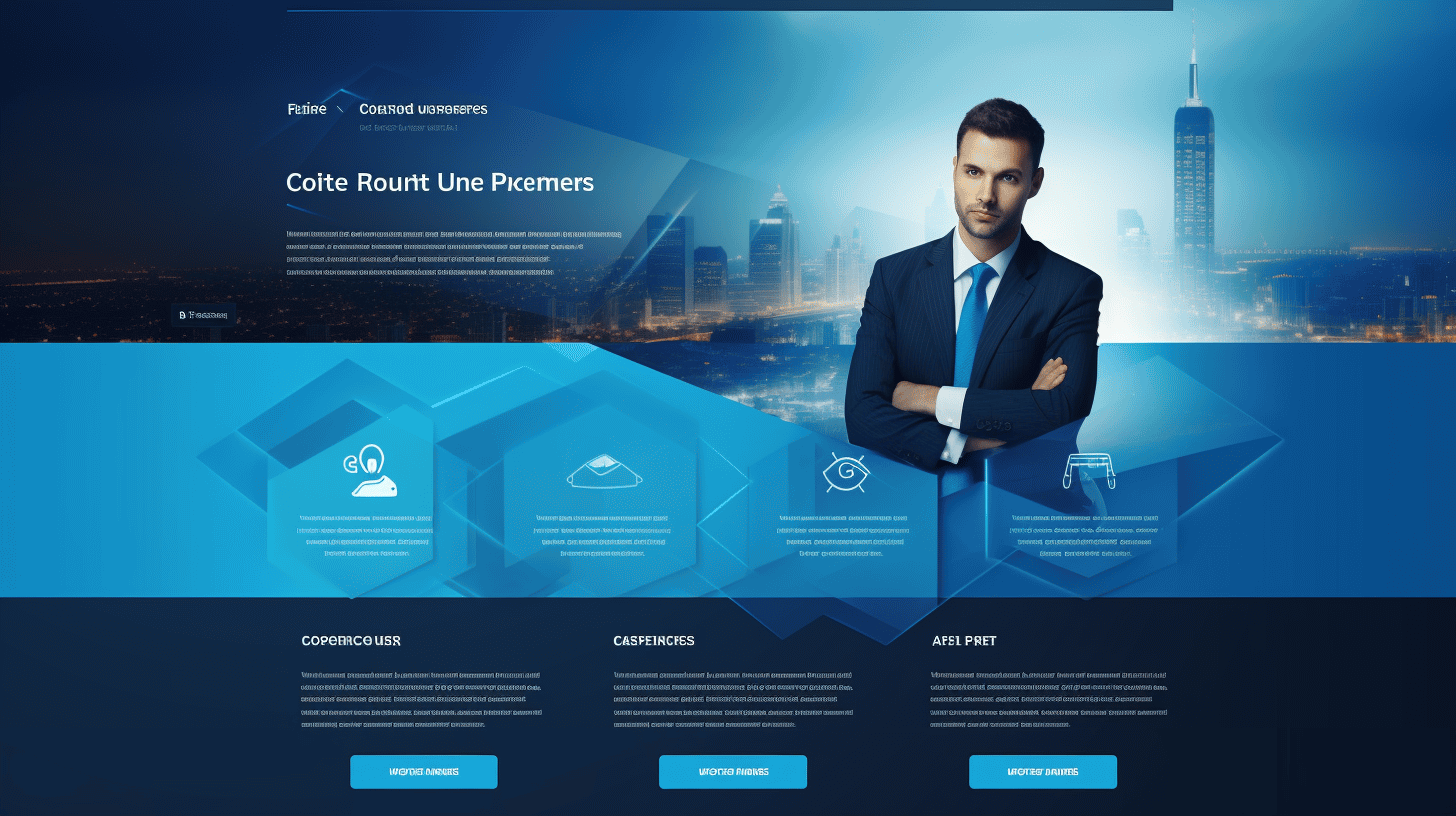在日益数字化的世界中,网络安全至关重要。随着网络威胁变得越来越复杂,企业和个人必须采取措施保护其网站和数据免受潜在侵害。WordPress 作为最受欢迎的内容管理系统之一,也不例外。这就是 WordPress 迁移发挥作用的地方。
WordPress 迁移是指将 WordPress 网站从一个托管环境转移到另一个托管环境的过程。虽然迁移的主要目标是确保网站的性能和稳定性,但它在增强在线安全性方面也起着至关重要的作用。通过迁移到安全的主机并采用最佳安全实践,网站所有者可以降低风险并保护其宝贵的数据。
在以下部分中,我们将探讨 WordPress 安全性的当前状态、WordPress 迁移的好处、定期更新的重要性、托管服务提供商在安全性方面的作用以及其他安全实践。我们将深入研究该主题,让您全面了解 WordPress 迁移对于增强在线安全性的重要性。那么,让我们开始吧!🔒
WordPress 安全性的现状
不可否认,WordPress 是世界上最受欢迎的内容管理系统 (CMS) 之一,为各行各业的数百万个网站提供支持。然而,随着其极高的受欢迎程度,需要采取强大的安全措施来防范潜在的漏洞。在本文中,我们将探讨 WordPress 安全性的现状,并阐明网站所有者和开发人员应该注意的重要方面。
风险等级
说到 WordPress 安全,了解风险级别至关重要。通过识别潜在威胁,网站所有者可以采取适当的安全措施来保护他们的在线状态。以下是与 WordPress 相关的一些关键风险级别:
- 低风险: 此级别包括可能破坏网站功能或给用户带来轻微不便的轻微安全问题。通常可以通过实施安全最佳实践并保持 WordPress 核心、主题和插件为最新版本来减轻这些风险。
- 中等风险: 中等风险漏洞对 WordPress 网站构成更高级别的威胁。这些漏洞可能包括可能导致数据泄露或未经授权访问敏感信息的安全漏洞。定期的安全审核和主动监控对于及时检测和缓解这些风险至关重要。
- 高风险: 此级别表示可能导致严重后果的严重安全风险。高风险漏洞可能导致网站完全被攻陷、管理员未经授权访问或恶意代码注入。必须立即采取行动,例如修补漏洞和阻止可疑 IP 地址,才能有效应对这些风险。
漏洞来源
识别漏洞来源对于了解 WordPress 安全性至关重要。虽然 WordPress 核心本身经过了严格的安全测试和更新,但其他因素也会导致潜在的漏洞。WordPress 中漏洞的主要来源是:
- 插件: 插件是扩展 WordPress 功能的强大工具。但是,如果开发、维护或更新不当,它们也会带来潜在的漏洞。选择来自可靠来源的信誉良好的插件、定期更新插件并删除任何过时或不必要的插件至关重要。
- 主题: 与插件类似,主题在 WordPress 安全中也发挥着至关重要的作用。编码不当或过时的主题可能会引入恶意行为者可以利用的漏洞。选择信誉良好的开发人员提供的可靠主题并确保定期更新以解决任何安全问题非常重要。
- 托管环境: WordPress 网站所在的托管环境会对其安全性产生重大影响。具有强大服务器端安全措施的安全托管提供商可以帮助防御各种攻击,例如 DDoS、SQL 注入和跨站点脚本 (XSS)。
插件对安全的影响
插件是 WordPress 生态系统不可或缺的一部分,可提供增强的功能和自定义选项。但是,了解它们对安全性的影响至关重要。以下是一些需要考虑的关键点:
- 根据最近的一项调查,插件导致了 WordPress 中 97% 个新的安全漏洞。
- 去年有超过 170,000 个 WordPress 博客遭到黑客攻击,凸显了警惕插件相关漏洞的重要性。
- 大约 52% 的漏洞源自插件,而 37% 的漏洞归因于 WordPress 核心。
考虑到这些统计数据,很明显,勤勉的插件管理对于确保 WordPress 网站的安全性至关重要。定期更新插件、监控漏洞以及删除任何不必要或过时的插件可以显著降低安全漏洞的风险。此外,为 WordPress 登录实施双因素身份验证 (2FA) 可以增强登录安全性,正如最近一项调查中 70% 的受访者已经实施了它。
总之,WordPress 安全始终是网站所有者和开发人员的首要任务。通过了解风险级别、识别漏洞来源以及了解插件对安全性的影响,他们可以采取主动措施保护其网站免受潜在威胁。请继续关注,我们将在接下来的部分中揭示更多增强 WordPress 安全性的策略和最佳实践。
WordPress 迁移的好处
在不断发展的数字环境中,小型企业不断寻求提高其在线形象并保持竞争优势的方法。 可以帮助他们实现这一目标的一个强大工具是 WordPress 迁移。 将您的网站迁移到 WordPress 可带来一系列好处,这些好处可能会对您的业务成功产生深远影响。
改进的安全措施
迁移到 WordPress 的最重要优势之一是它提供的安全措施得到改进。随着网络威胁日益复杂,保护您的网站和客户数据至关重要。
WordPress 以其强大的安全功能而闻名,并定期发布更新以解决任何漏洞。通过迁移到此平台,您可以利用增强的安全措施,例如:
- 定期进行安全审核和补丁管理以防范潜在威胁。
- 访问经过严格安全测试的插件和主题。
- 可靠的备份解决方案,确保在发生违规时您的网站数据是安全的。
你知道吗?根据 Sucuri 进行的一项研究,与其他 CMS 平台相比,WordPress 的漏洞率明显较低。
可扩展性
考虑迁移到 WordPress 的另一个令人信服的理由是它提供的可扩展性。随着业务的增长,您的网站需要处理增加的流量并适应新特性和功能。WordPress 提供了灵活性,可轻松扩展您的网站。
使用 WordPress,您可以:
- 无需任何编码知识即可轻松添加新页面、博客文章和多媒体内容。
- 安装插件来扩展您网站的功能,例如电子商务、客户支持或预订系统。
- 优化您的网站的速度和性能,确保为访问者提供无缝的用户体验。
有趣的事实:WordPress 为互联网上超过 40% 的网站提供支持,使其成为一个值得信赖且被广泛采用的平台。
避免延误和错误
将网站迁移到 WordPress 还可以帮助您避免使用其他内容管理系统时可能出现的延迟和错误。WordPress 以其用户友好的界面和直观的工具而闻名,使企业主可以轻松管理和更新他们的网站,而无需依赖开发人员。
通过迁移到 WordPress,您可以:
- 告别复杂的代码和技术术语,因为 WordPress 简化了网站管理流程。
- 快速编辑和更新您的网站内容,确保其保持新鲜和相关性。
- 使用内置预览功能,您可以在实际应用之前检查更改,从而最大限度地降低出错的风险。
你知道吗?根据 WP Engine 进行的一项调查,70% 的受访者表示,迁移到 WordPress 后,网站速度和性能有所提高。
总之,迁移到 WordPress 为小型企业提供了一系列好处,包括改进的安全措施、可扩展性以及避免延迟和错误。通过利用 WordPress 的强大功能,企业可以增强其在线形象,并在当今竞争激烈的数字环境中保持领先地位。
要了解有关 WordPress 迁移对小型企业的好处的更多信息,请查看 这份综合指南.
定期更新的重要性
定期更新是维护安全且高性能的 WordPress 网站的关键方面。无论是核心 WordPress 软件、主题还是插件,保持最新状态都至关重要,原因如下。在本节中,我们将探讨定期更新的重要性以及为什么定期更新应该成为每个 WordPress 网站所有者的首要任务。
1.安全: 定期更新 WordPress(包括主题和插件)可提供必要的安全补丁。这些更新可解决黑客或恶意行为者可能利用的任何漏洞或漏洞。通过及时安装更新,您可以最大限度地降低安全漏洞的风险,并确保您的网站和用户数据安全。
2. 错误修复和改进: 更新还包括错误修复和增强功能。开发人员不断致力于改进他们的产品,更新通常包括对已知问题或错误的修复。通过安装更新,您可以确保您的网站以最佳方式运行并提供无缝的用户体验。
3.兼容性: WordPress 更新不仅限于核心软件。主题和插件也会收到更新,以确保与最新版本的 WordPress 兼容。随着 WordPress 的发展,某些特性或功能可能会发生变化,旧主题或插件可能无法按预期工作。保持所有内容最新可确保兼容性并防止任何可能破坏您网站的冲突。
🌟 内部提示: 通过导航到更新部分定期检查 WordPress 仪表板中的更新。您还可以启用插件和主题的自动更新,以确保您不会错过任何重要更新。
请记住,及时更新是维护安全且高性能的 WordPress 网站的主动步骤。通过让您的网站保持最新状态,您不仅可以增强安全性,还可以利用最新的功能和改进。养成定期检查更新并及时安装的习惯,以保持您的网站以最佳状态运行。
有关定期更新 WordPress 网站的重要性的更多信息,您可以参考 这篇关于 WordPress 重要更新的文章.
托管服务提供商在安全方面的作用
在当今的数字环境中,网络安全是个人和企业的首要关注点。随着网络威胁变得越来越复杂,采取强有力的安全措施来保护敏感数据并维护网站的完整性至关重要。增强在线形象的一种方法是选择安全的网络托管服务提供商。
安全托管服务提供商的重要性
在网站安全方面,托管服务提供商起着关键作用。原因如下:
- 服务器级安全性: 信誉良好的托管服务提供商会在服务器级别实施严格的安全协议。这包括防火墙、入侵检测系统和定期安全审核,以识别和预防任何潜在漏洞。
- 定期软件更新: 您的托管服务提供商应保持服务器软件和操作系统的更新,以防御已知的安全漏洞。这可确保您的网站运行在最新、最安全的软件版本上。
- 恶意软件扫描和删除: 可靠的托管服务提供商会定期进行恶意软件扫描,以检测并删除可能危害您网站安全的任何恶意代码。这种主动方法有助于防止恶意软件感染,并保护您的网站免受网络威胁。
- 安全网络基础设施: 强大的托管服务提供商会投资安全的网络基础设施,以抵御 DDoS 攻击和其他类型的网络威胁。这可确保您的网站即使在流量大的情况下也能保持可访问性。
共享主机与托管主机
在评估托管服务提供商时,您通常会遇到两个主要选项:共享托管和托管托管。以下是每个选项的简要概述:
- 共享主机: 在共享主机中,多个网站托管在同一台服务器上,共享服务器资源。虽然这是一种经济高效的选择,但在安全方面也可能存在更大风险。一个网站的漏洞可能会影响同一台服务器上的所有网站。
- 托管: 另一方面,托管主机提供更高级别的安全性和支持。通过托管主机,主机提供商负责服务器管理、安全更新和备份,让您可以专注于您的网站。这种类型的主机非常适合那些优先考虑安全性并希望高枕无忧的企业和个人。
结论
选择安全的网络托管服务提供商是保护您的网站免受网络威胁的关键步骤。通过选择优先考虑安全性的托管服务提供商,您可以最大限度地降低与共享资源环境相关的风险,并确保您的网站受到保护。要使用可靠的云托管为您的 WordPress 网站提供未来保障,请探索 WordPress 云托管. 拥抱安全托管的强大功能,领先潜在安全漏洞一步。
双因素身份验证的重要性
想象一下这样一个场景:您收到一封电子邮件通知,通知您有人未经授权试图访问您的电子邮件帐户。当您意识到潜在的影响时,您会感到恐慌——您的个人信息可能会被泄露,您的帐户可能会被盗用,您的数字身份也可能会受到威胁。不幸的是,这种令人担忧的情况在当今互联互通的世界中非常常见。这就是双因素身份验证的作用所在。
🔒什么是双因素身份验证?
双因素身份验证 (2FA) 是一项必不可少的安全措施,它为登录过程增加了一个额外步骤。2FA 不再仅仅依赖用户名和密码,而是要求用户提供第二种身份证明,例如指纹、发送到其移动设备的唯一代码或安全密钥。通过要求提供这部分额外信息,双因素身份验证大大降低了未经授权访问的可能性。
🛡️ 通过双因素身份验证增强安全性
实施双因素身份验证有几个显著的好处:
- 更强的身份验证: 有了双重身份验证,网络犯罪分子在试图入侵您的账户时会面临额外的障碍。即使他们设法获取了您的密码,他们仍然需要访问您的设备或唯一代码才能进入。
- 防止未经授权的访问: 双重身份验证可防止他人未经授权访问您的帐户,保护您的敏感数据不落入他人之手。即使黑客以某种方式获取了您的登录凭据,它也能阻止黑客的入侵。
- 防范网络钓鱼: 网络钓鱼攻击很常见,即毫无戒心的用户被诱骗泄露其登录信息。然而,双重身份验证有助于降低其有效性。即使您在不知情的情况下泄露了密码,黑客也无法在没有第二重身份验证的情况下登录。
- 安全远程访问: 随着远程办公的兴起,安全访问公司资源的需求变得至关重要。双重身份验证增加了一层额外的安全保障,确保只有经过授权的个人才能远程访问敏感信息。
- 安心: 知道您的在线帐户受到双重身份验证的保护,可以让您感到安心和自信。它大大降低了未经授权访问的风险,保护了您的数字存在和个人信息。
💡 采取行动保护自己
鉴于当今数字环境中网络威胁的普遍性,实施双因素身份验证应该成为个人和组织的首要任务。
要启用这一强大的安全措施:
- 检查您使用的服务是否提供双因素身份验证选项。许多流行的社交媒体平台、电子邮件提供商和银行机构都已提供此功能。
- 按照服务提供的说明设置双重身份验证。这通常涉及将您的帐户链接到移动设备或安全密钥。
- 为每个帐户设置强密码。双重身份验证是额外的安全保障,但它不能取代强密码。
在网络攻击频发的时代,采取主动措施保护您的在线状态至关重要。通过实施双因素身份验证,您可以显著降低未经授权访问的风险并保护您的敏感信息。不要等到网络攻击发生 - 立即采取行动并加强您的数字防御。利用双因素身份验证的强大功能,领先黑客一步。
迁移到安全主机作为主动措施
在当今的数字环境中,网站安全至关重要。随着网络攻击和数据泄露的威胁日益增加,企业和个人都必须采取主动措施保护其在线资产。其中一项措施就是迁移到安全的主机或架构。
增强安全性和性能
将网站迁移到更安全的主机或架构可提高安全性和性能。原因如下:
- 强大的安全功能: 安全主机通常配备强大的安全功能,如防火墙、恶意软件扫描程序和 SSL 证书。这些措施有助于保护您的网站和用户的敏感信息免受潜在威胁。
- 定期安全更新: 安全托管服务提供商通常会及时更新安全补丁和更新。通过迁移到安全主机,您可以确保您的网站采用最新、最安全的技术,从而最大限度地降低漏洞和漏洞利用的风险。
- 改进的服务器资源: 安全主机通常提供更好的服务器资源,例如更快的处理器、充足的存储空间和更高的带宽。这意味着网站性能更高、加载时间更快、用户体验更好。
- 分布式拒绝服务 (DDoS) 防护: DDoS 攻击可以通过大量流量淹没服务器来破坏网站。安全托管服务提供商通常会提供 DDoS 防护服务,帮助缓解这些攻击并确保合法用户可以访问您的网站。
- 专家支持: 迁移到安全主机通常意味着可以接触到专门从事网站安全的专家团队。这些专业人士可以提供指导和支持,帮助您实施最佳实践,确保您的网站安全无虞。
通过采取主动的方法确保网站安全并迁移到安全主机,您不仅可以保护宝贵的资产和敏感数据,还可以与用户建立信任。当访问者看到您优先考虑他们的安全时,他们更有可能与您的网站互动并选择您,而不是那些可能忽视这一关键方面的竞争对手。
🔒 拥抱安全托管的力量,加强您的网站以抵御潜在威胁。立即采取行动,享受在线状态得到保护所带来的安心。
迁移期间可靠备份解决方案的必要性
您是否曾经历过在网站迁移过程中丢失宝贵数据的痛苦感觉?这是一个噩梦般的场景,可能会让您手忙脚乱地恢复丢失的文件,冒着宝贵内容的风险并可能损害您的在线声誉。这就是为什么在进行迁移时可靠的备份解决方案是绝对必要的。在本文中,我们将探讨备份解决方案的重要性以及为什么它们应该是迁移过程中的首要任务。
通过备份防止数据丢失
迁移网站时,数据丢失的风险很大。迁移过程中的任何失误或技术故障都可能对您的文件、数据库和配置造成无法挽回的损害。如果没有适当的备份,您可能会发现自己从头开始,甚至更糟的是,丢失重要的客户数据或交易记录。在迁移之前备份您的网站对于防止此类数据丢失并在过渡期间提供安全网至关重要。
可靠备份解决方案的好处
投资可靠的备份解决方案可以避免迁移期间潜在的灾难和停机。以下是它们提供的一些主要优势:
- 安心:知道您的数据已安全备份,您就可以放心地进行迁移过程。您可以专注于手头的任务,而不必担心不可逆转的数据丢失的可能性。
- 快速恢复:如果在迁移过程中出现意外问题,可靠的备份解决方案可让您快速将网站恢复到以前的状态。这可最大限度地减少停机时间并确保您的网站能够继续顺利运行。
- 数据完整性:备份解决方案可确保所有文件、数据库和配置均准确保存,从而帮助维护数据的完整性。这可确保无缝过渡并降低数据损坏的风险。
- 灵活性:可靠的备份解决方案为您提供多种选择。无论您是喜欢按设定的时间表自动备份还是随时手动备份,您都可以根据您的需求和偏好定制备份策略。
不同类型的备份解决方案
有多种备份解决方案可供选择,每种解决方案都有自己的一套功能和能力。以下是一些示例:
| 备份解决方案 | 描述 |
|---|---|
| 基于插件 | 这些解决方案与流行的 CMS 平台无缝集成,并提供自动备份流程。示例包括适用于 WordPress 的 UpdraftPlus 和适用于 Joomla 的 Akeeba Backup。 |
| 服务器端 | 这些解决方案利用服务器级工具来创建备份。托管服务提供商通常会将这些解决方案作为其服务的一部分提供。 |
| 基于云 | 这些解决方案将备份存储在云中,提供安全且易于访问的数据副本。热门选项包括 Dropbox、Google Drive 和 Amazon S3。 |
| 手动备份 | 如果您更喜欢亲自操作,则可以通过下载文件和数据库并将其存储在安全的位置来手动创建备份。 |
结论
在网站迁移的快节奏世界中,可靠的备份解决方案不可或缺。它们让您高枕无忧,确保在紧急情况下快速恢复,并保持数据完整性。从基于插件的选项到云存储解决方案,有各种各样的备份选择可供选择,以满足您的特定需求。通过在迁移之前、期间和之后优先备份,您可以保护您的网站并确保顺利和成功的过渡。不要让您的数据处于危险之中——备份它!
🔥 请记住:“可靠的备份解决方案就像您网站的保险单。您希望永远不需要它,但如果灾难来袭,您会很高兴拥有它。”
额外的安全措施
除了前面提到的基本安全措施外,还有一些做法可以显著增强 WordPress 网站的安全性。这些做法超越了基本做法,并为各种类型的威胁提供了额外的保护层。
限制登录尝试
阻止恶意登录尝试的一种有效方法是限制允许的登录尝试次数。默认情况下,WordPress 允许用户尝试无限制的登录尝试,这可能会使您的网站容易受到暴力攻击。但是,您可以通过实施登录尝试限制来轻松降低此风险。
🔒 提示: 安装“登录锁定”或“限制登录尝试次数”等插件来设置允许的最大登录尝试次数。这些插件将自动阻止超出限制的 IP 地址,防止暴力攻击。
移动敏感文件
WordPress 使用某些对其功能至关重要的文件和目录。然而,这些文件也可能成为攻击者的目标。为了降低未经授权访问的风险,建议将敏感文件和目录移动到非公开位置。
一些常见的目标文件和目录包括:
wp-config.php:此文件包含数据库凭据和安全密钥等敏感信息。将其移至其他位置可以降低攻击风险。wp-内容:此目录包含主题、插件和上传的媒体文件。通过将其移出 webroot 文件夹,可以防止直接访问这些文件。
💡 笔记: 在修改任何文件或目录之前,请务必创建备份。此外,移动文件或目录后,请务必更新网站配置中的相关路径。
使用 Web 应用程序防火墙
Web 应用程序防火墙 (WAF) 可充当您的网站与潜在威胁之间的保护屏障。它可以过滤传入流量、拦截恶意请求并阻止它们访问您的 WordPress 网站。实施 WAF 可以主动保护您的网站免受已知漏洞和新兴威胁的侵害。
🛡️ 你可知道? Sucuri 或 Cloudflare 等基于云的安全服务提供 WAF 功能。这些服务提供额外的安全功能,例如恶意软件扫描和网站性能优化。
修改 wp-config.php 文件位置
这 wp-config.php 文件包含敏感信息,如果未经授权的人员访问,可能会危及您网站的安全。默认情况下,此文件位于 WordPress 安装的根目录中,因此很容易被发现和利用。
为了增强网站的安全性,请考虑自定义 wp-config.php 文件。将其移动到非公共目录将增加一层额外的保护,以防止未经授权的访问。
🔒 专业提示: 要更改 wp-config.php 文件,您可以编辑您的网站的 .htaccess 文件并在开头添加以下几行:
<Files wp-config.php> 此代码有效地限制了对
命令允许、拒绝
全部否认
wp-config.php 文件,防止潜在攻击者获取敏感信息。
请记住,实施这些额外的安全措施将显著提高您的 WordPress 网站的整体安全性。通过将它们与前面讨论的基本安全措施相结合,您可以创建针对潜在威胁的强大防御。保持警惕,保持您的 WordPress 安装为最新,并定期监控您的网站是否有任何可疑活动。
结论
总之,WordPress 迁移在增强在线安全性方面起着至关重要的作用。通过迁移到安全的托管服务提供商并实施额外的安全措施,网站所有者可以显著降低网络威胁的风险并保护其数字资产。定期更新、可靠的备份解决方案和双因素身份验证进一步加强了 WordPress 网站的安全态势。
在 Managed-WP,我们了解安全在线状态的重要性。我们的高级托管 WordPress 云托管平台提供高级安全措施、可扩展性和专家 24/7/365 WordPress 支持。借助 Managed-WP,您可以简化基础架构,享受数字体验的自由,并安心地知道您的网站由一支专业团队提供支持。
立即迁移到 Managed-WP 来开始增强您的 WordPress 网站的安全性: 在此查看我们的服务! 🚀
常见问题
- 什么是 WordPress 迁移?
WordPress 迁移是指将 WordPress 网站从一个托管服务提供商或服务器迁移到另一个托管服务提供商或服务器的过程。它涉及传输网站的所有文件、数据库和设置。
- WordPress 迁移如何增强在线安全性?
WordPress 迁移允许您将网站的软件、主题和插件更新到最新版本,从而增强在线安全性。它有助于消除以前版本中可能存在的任何漏洞或安全漏洞,从而降低黑客攻击或恶意软件攻击的风险。
- 对于提高在线安全性来说,WordPress 迁移是否必要?
虽然 WordPress 迁移不仅仅专注于增强在线安全性,但它是维护安全网站的关键步骤。它允许您实施安全措施,例如使用安全托管服务提供商、SSL 证书和防火墙插件,这些措施有助于提高网站的整体安全性。
- 在 WordPress 迁移期间需要考虑哪些关键安全措施?
在 WordPress 迁移期间,需要考虑的一些重要的安全措施包括:选择安全的托管服务提供商、更新所有软件、主题和插件、实施 SSL 证书以确保数据传输安全、设置强密码和用户角色,以及使用安全插件来增加保护。
- WordPress 迁移过程中是否存在任何风险?
是的,WordPress 迁移过程中存在潜在风险。这些风险可能包括数据丢失、链接或图像损坏、网站停机和兼容性问题。因此,建议备份您的网站数据并寻求专业帮助以尽量减少这些风险。



















